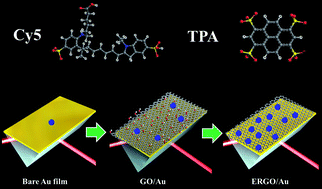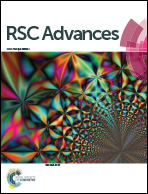Investigating the interaction of dye molecules with graphene oxide by using a surface plasmon resonance technique†
Abstract
A surface plasmon resonance technique was used to systematically study the interaction of two dye molecules with graphene oxide (GO) and electrochemically reduced GO (EC-rGO) substrates. EC-rGO shows higher binding ability with both dyes than GO, possibly due to the molecular doping or π–π stacking. The results of SPR sensing are in agreement with the conclusions of fluorescence quenching experiments. This work may be valuable for graphene-related research work on optoelectronics and biosensors.


 Please wait while we load your content...
Please wait while we load your content...